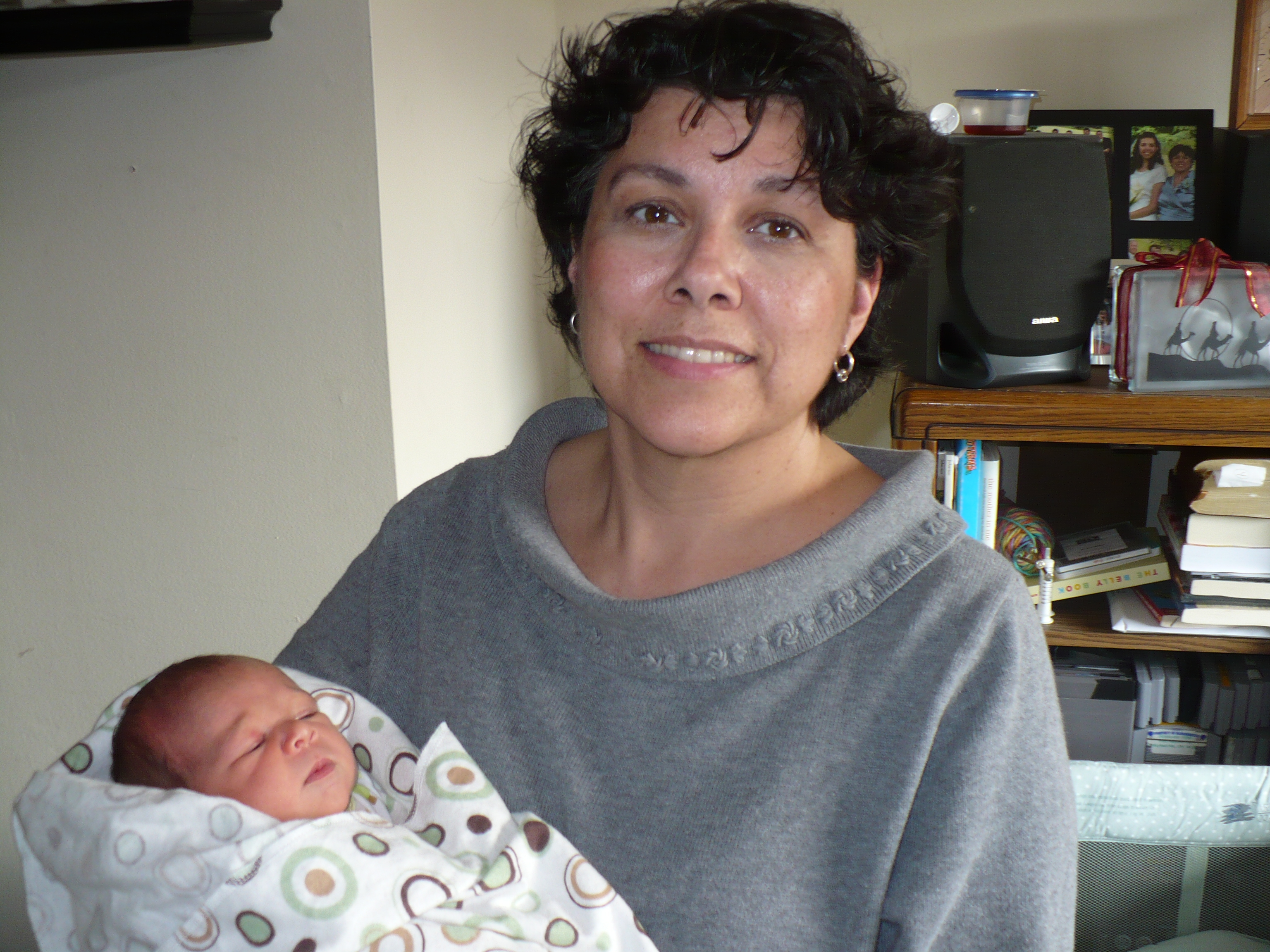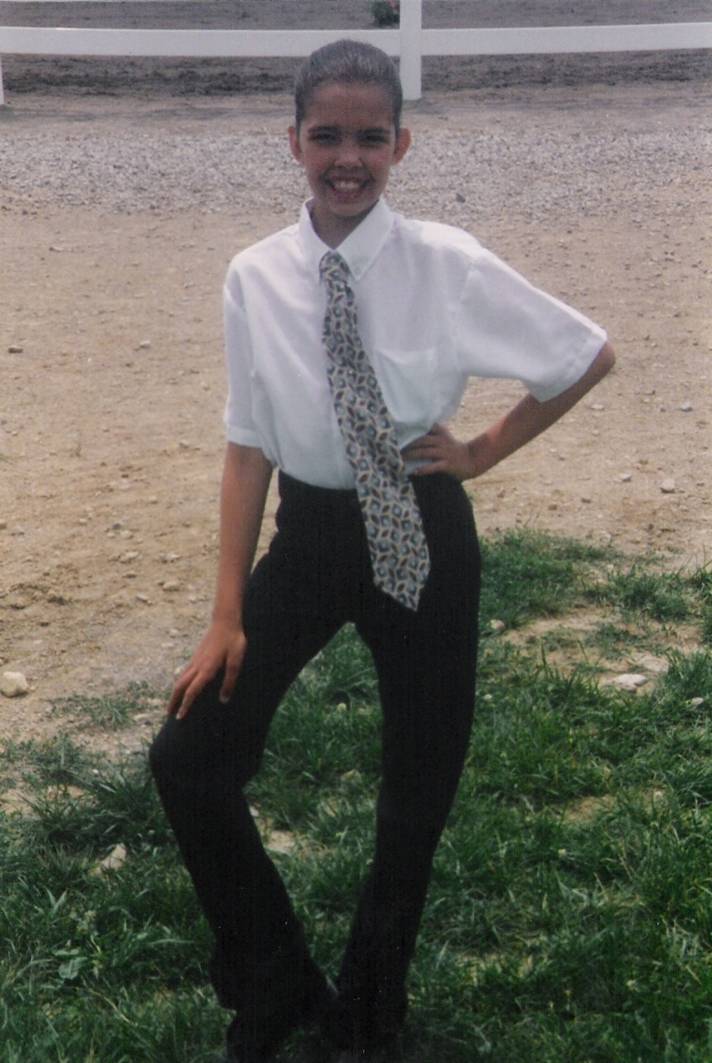Today starts a three-part series: Marfan Through the Eyes of the “Unaffected.” You’ve read my story, but what about how Marfan has affected those around me?
Over New Years Mark, the baby, and I met one of my college girlfriends and her fiancée for lunch. This friend has chronic pain, worse than mine, and at one point during the meal gestured to her fiancée and remarked “Yah, I don’t even know why he’s marrying me!” Her fiancée pointed at Mark and said, “Well, he married her!”
And that got me thinking…why did Mark marry me? [I mean, besides love and all that jazz.] How did he/does he view Marfan that makes him want to stay, when it’s made other guys run away? And from there, I wondered about the effects on my other family members growing up. Aside from the medical bills (OH, those bills!), we never really discussed the impact my illness had on them.
So today, you’ll hear from my mother. Next Monday my brother is posting, and Mark will round out the series.
I’ve already written some about my mom, but as a quick intro, she’s a Brasilian immigrant, former dancer, and current PhD student. She raised three kids, four if you count my dad. And this is her story of my diagnosis.
 There were a few things about 8 year old Maya that defined her: her love of everything having to do with horses, her skinny arms and legs, and her political activism (yes, even at age 8 she stood up for things, wrote editorials and kept an eye out for unfairness anywhere).
There were a few things about 8 year old Maya that defined her: her love of everything having to do with horses, her skinny arms and legs, and her political activism (yes, even at age 8 she stood up for things, wrote editorials and kept an eye out for unfairness anywhere).
That my children were not athletic was not a surprise to me – after all, the apple does not fall far from the tree. However, Maya’s inability to do some of the most basic things (ride a bike, hit a ball, etc) began to cause me concern when it appeared that she lacked the muscular strength to do them. At her yearly check up I brought up my concerns to her pediatrician, who began to study and measure Maya as if he had never seen her before. He said to me, “I am sorry, I don’t know why I didn’t see it before,” and then he referred us to a life of doctor visits. First a geneticist, then a cardiologist, then an ophthalmologist, and so forth…
I have to admit that the magnitude of the diagnosis did not impact us for a few years. Maya’s condition was not straightforward, so the diagnosis was nebulous – maybe she has Marfan syndrome, maybe it is something else, in the meantime, we will treat her as if she has it. So, for the first few years we did not really think that she had Marfan, we just thought there was something amiss – something that needed caution and concern, but was not as scary as it appeared.
So, our biggest immediate concern was deciding what to do about horse-riding lessons. I was in favor of following the cardiologist’s orders to stop lessons, but Maya’s dad (a horse rider himself) did not want to remove the one activity that was central to her 8-year-old life. So, we let Maya continue through one more riding season. Luckily the horse cooperated until the last riding day of the season when he knocked Maya off and into a pile of manure.
 The next year was a growth spurt year and Maya’s dad took her to her yearly doctor appointments. That was the end of horse riding. Maya’s dad was duly frightened by the aortic growth and the memory of the last riding day.
The next year was a growth spurt year and Maya’s dad took her to her yearly doctor appointments. That was the end of horse riding. Maya’s dad was duly frightened by the aortic growth and the memory of the last riding day.
My fears over the next few years was less about what might happen to Maya and more about what was happening to her – she was becoming an angry child. I spent less time on potential problems and more time trying to figure out how to help Maya with the issues that were relevant to her 10, 11 and 12-year old world. This natural tendency to a pragmatic approach has been helpful to me and also to Maya.
I could talk about all the things we helped Maya try, but that is her story to tell.
For me, there have been moments when I shook my fist to the heavens, moments when I was sick with worry, moments when I was sad for all of the things that Maya would miss. There were days when I wanted to lurch out at indifferent (or even mean) middle schoolers, days when I wanted to be able to just go into a store and buy Maya a pair of pants that fit – right off the rack! There were frustrations, set backs, relentless doctor visits and the accompanying bills, and this persistent knowledge that my child is not like all of the other children.
However, I have to honestly say that while these feelings existed they did not persist – mostly we were busy living life. We focused on possibilities not impossibilities. Thus, when Maya could not ride horses, we said, “Ok, let’s see what you can do and let’s do those things.” Maya’s dad took golf lessons with her, we took her swimming, she rode her bike, and we went to art museums, libraries and on short hikes. We participated as fully as possible in every aspect of life. Emergency hospital visits sneaked in and forced us to pause, but once the scare was over, we plowed on. Worries about the future crept into our thoughts periodically, so we did our best to crowd them out with a busy and full life.
This is not to say that we stuck our heads in the sand and pretended that Maya was not affected. We became informed, we read and sought research and experts; we encouraged Maya to become informed, we were diligent about health care, we followed guidelines (sometimes too strenuously). Sometimes we made good choices (helping Maya find a support group) and sometimes we were over-protective. No one parents perfectly.
The bottom line is that we came to understand that we do not control some of the critical aspects of our health. Our behavior can affect our health, but we do not decide who inherits what genes, who develops what disease or all that happens to us. But we can control our responses. And for me, that meant that sometimes I just raised my arms, took a deep breath and rode life’s roller coaster with the wind in my face. After all, if Maya can manage so well, so can I.

13 Comments
Leave a reply →